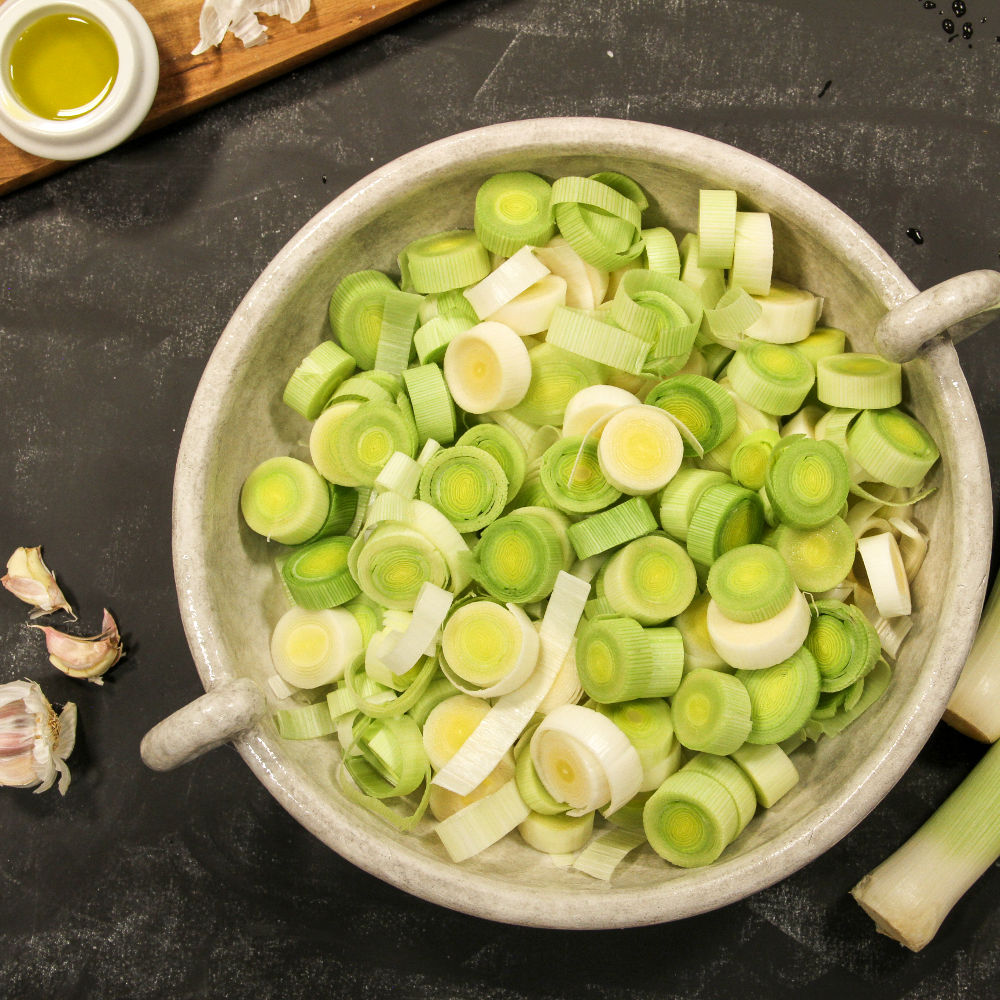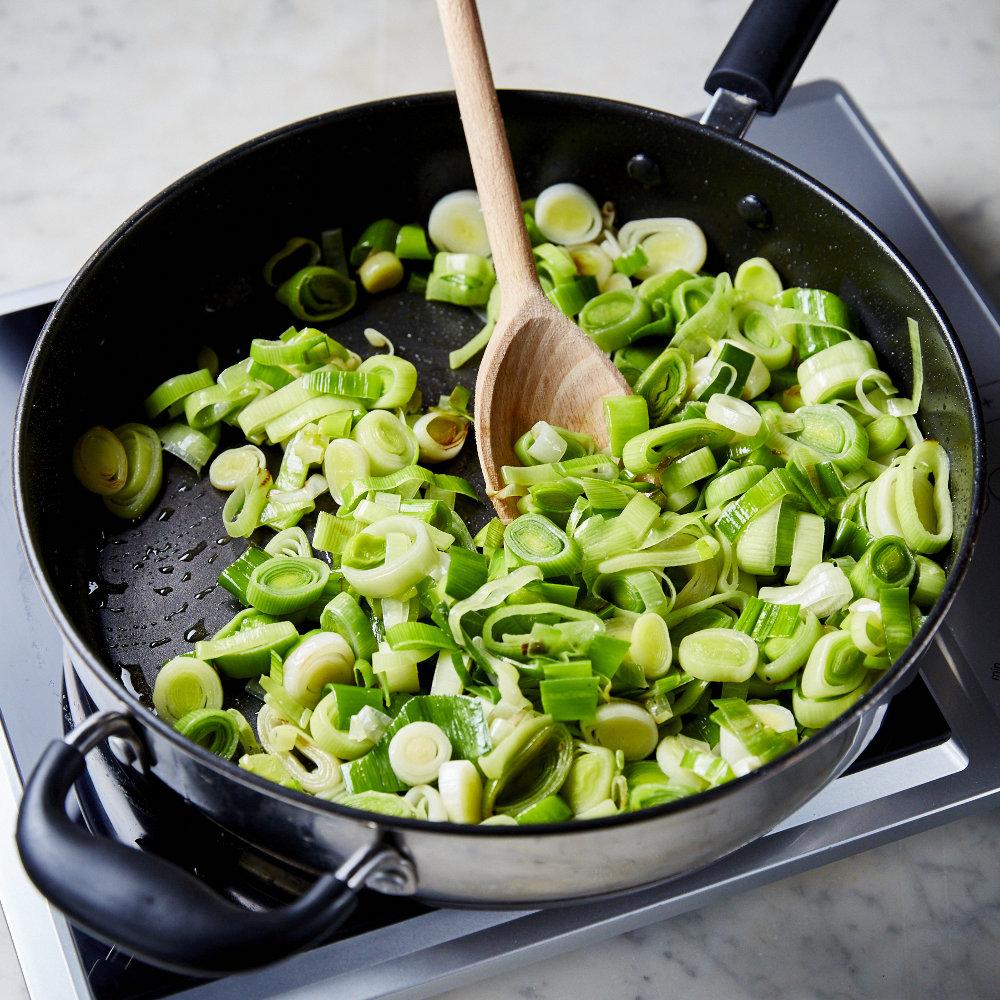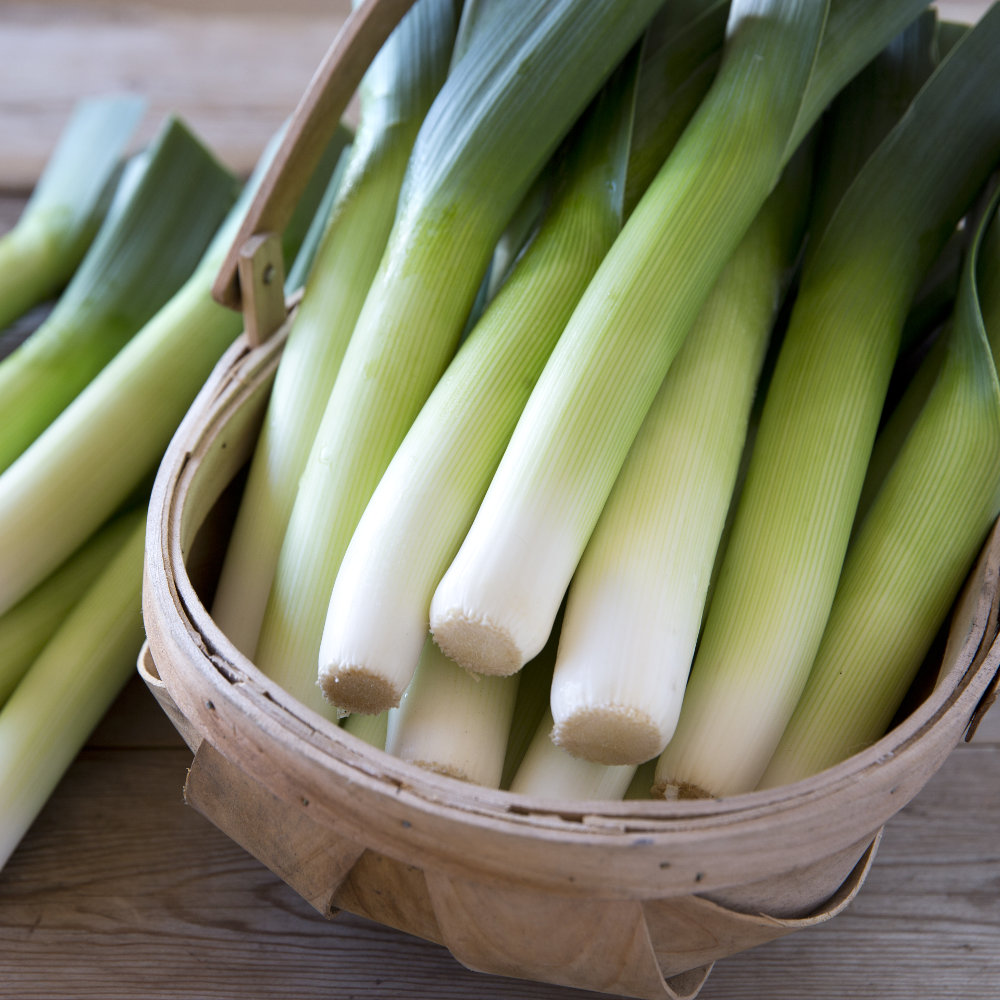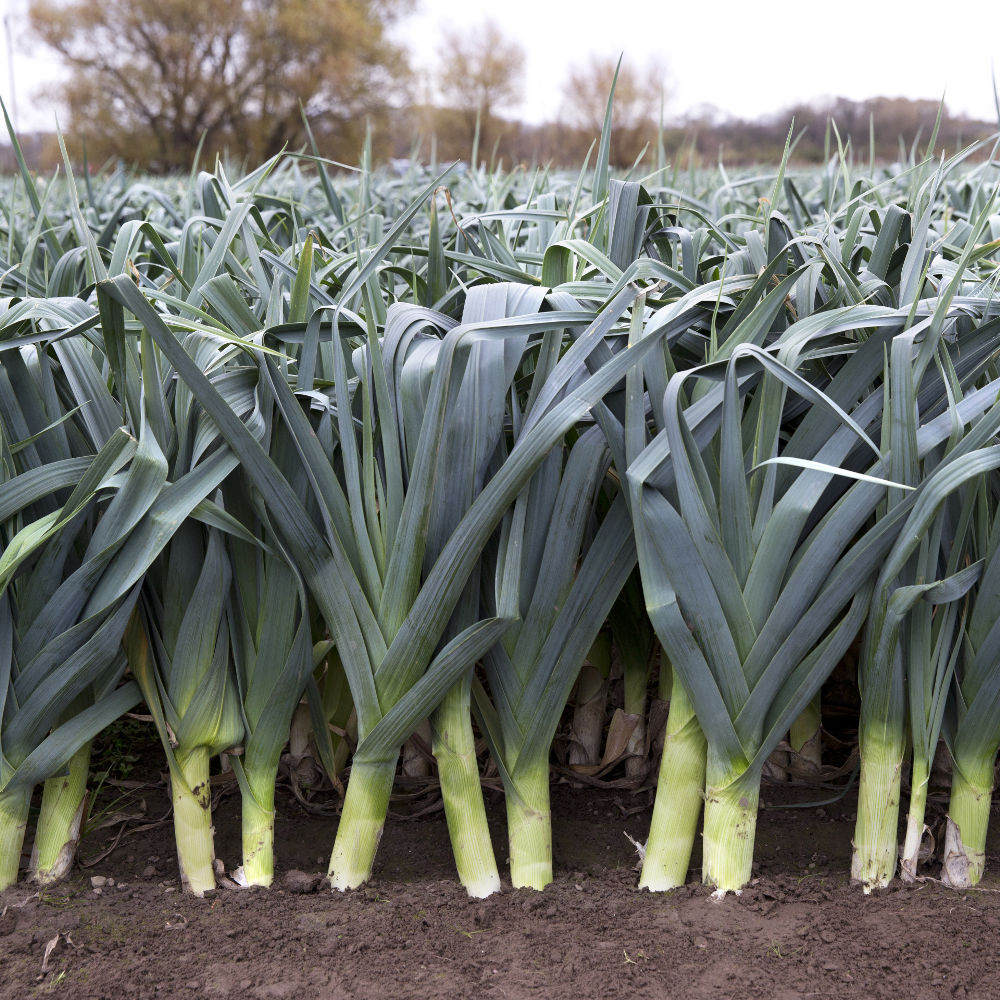
What are Leeks?
Leeks have been popular for thousands of years – they were cultivated by the Ancient Egyptians, regular on menus in the middle ages and have been the national symbol for Wales for at least 700 years.
Leeks are a member of the allium family along with onions, garlic and shallots, yet much easier to prepare! They have their own distinct flavour, which is rather like a mild onion, only sweeter. Usually eaten cooked, you can also eat leeks raw, particularly young leeks. The main edible part is the white stem – which is around two thirds of the length of the leek.



